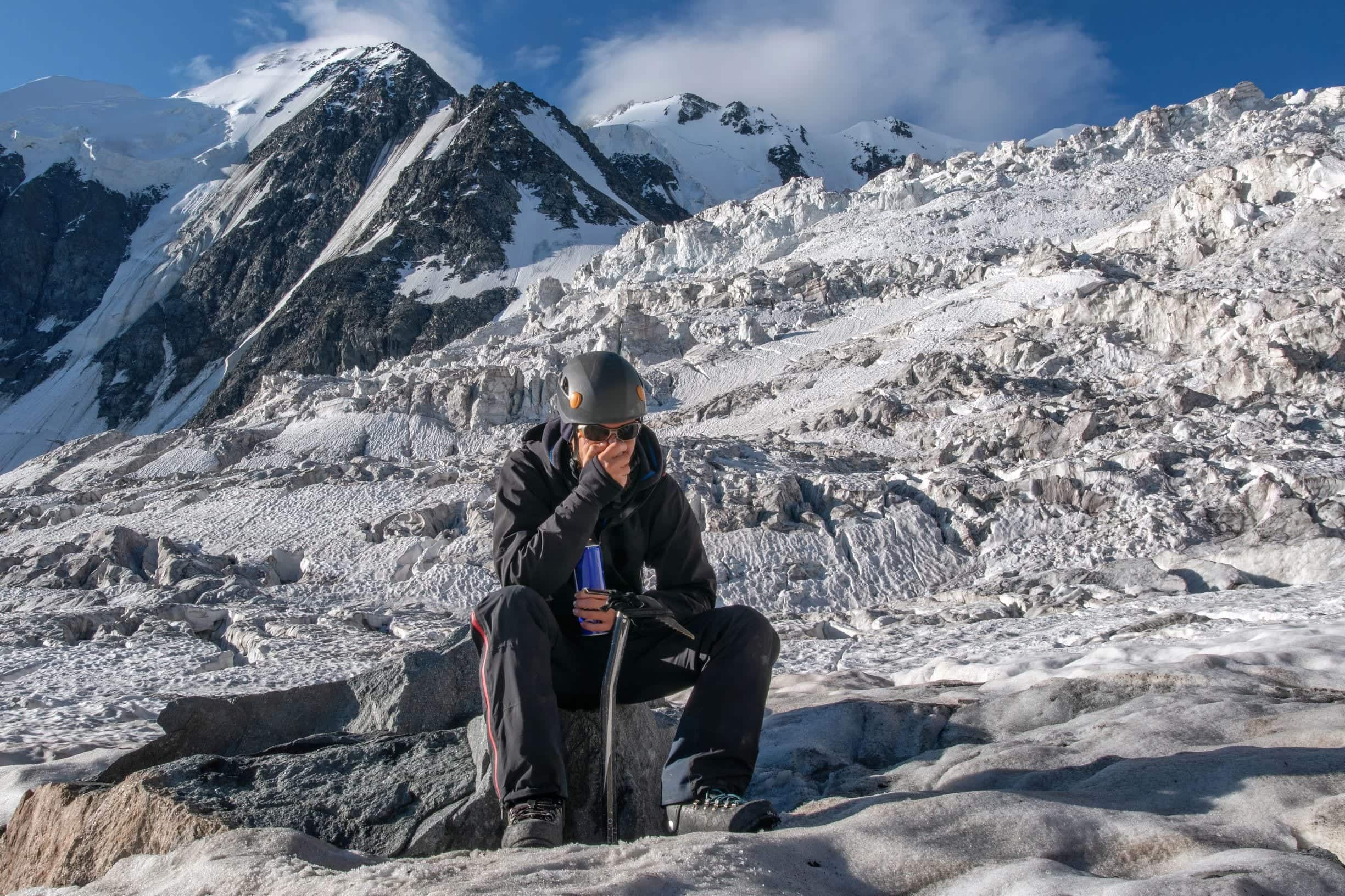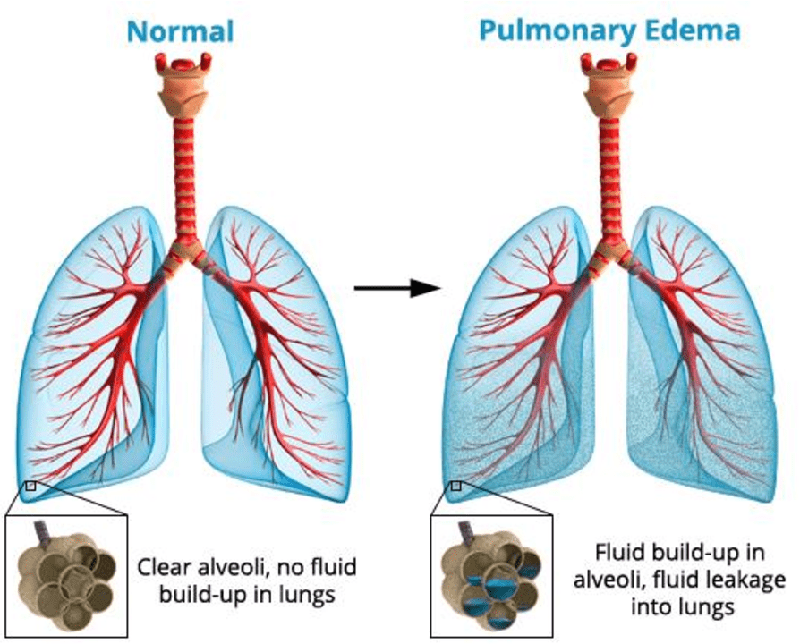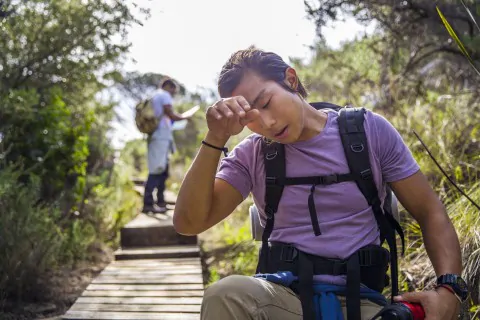What is Altitude Sickness?
Altitude Sickness is the harmful effect of high altitude, caused by rapid exposure to low amounts of oxygen at high elevation. Altitude Sickness will start to occur around 3000 meters, though some with poor health may be affected at lower altitudes. Trekkers can respond to high altitudes in different ways. Altitude sickness symptoms may include headaches, vomiting, tiredness, confusion, trouble sleeping, and dizziness. Acute Mountain Sickness (AMS) can progress to high altitude pulmonary edema (HAPE) with shortness of breath or high altitude cerebral edema (HACE) with confusion.
Normally altitude sickness occurs when you travel to a high altitude too quickly. These symptoms occur when your body tries to adjust to the lower air pressure and lower oxygen levels at high altitudes. Altitude sickness or mountain sickness is normally caused when you are trekking to high altitude lands with low oxygen. It is also important to keep in mind that, being young and fit don’t reduce your risk. Just because you have not experienced altitude sickness in the past doesn’t mean your immune is strong. The only sure method to prevent altitude sickness on Manaslu Circuit Trek is to take plenty of time to ascend.

Types of Altitude Sickness
Larkya La Pass is a mountain pass with an elevation of 5,106m. This is the longest high altitude pass during Manaslu Circuit Trek. Oxygen level and atmospheric at this height may decrease by 50% than sea level. Due to this, trekkers doing Manaslu Circuit Trek have the risk of getting altitude sickness. It is very important to have a general idea about altitude sickness and its types.
The probability of getting Manaslu Circuit Trek altitude sickness depends upon the trekker’s body strength to adapt to such environments. Essentially, there are three types of altitude sickness:
Acute Mountain Sickness (AMS)

Acute Mountain Sickness (AMS) is a modest type of altitude sickness. It is the most common among altitude sicknesses while traveling from the lower to higher elevation. Symptoms usually can be seen within 12 to 24 hours of reaching a higher elevation. As the body acclimatizes, it gets back to normal within a day or two with sufficient rest. Vital nutrients, rehydration of the body, and proper rest is the best treatment of AMS.
Symptoms
- Loss of appetite, nausea, or vomiting
- Excessive Flatulation
- Fatigue, headache with or without dizziness or “pins and needles” sensation
- Swelling of hands, feet, and face
- Nose bleeding
- Shortness of breath
- Persistent rapid pulse
High Altitude Pulmonary Edema (HAPE)

High Altitude Pulmonary Edema (HAPE) is an advanced form of altitude sickness then AMS. It is caused by excess fluid in the lungs which collect in the many air sacs in the lungs. This then causes difficulty in breathing. It is a life-warning form of non-cardiogenic pulmonary edema that occurs when ascending rapidly to higher altitudes. The rate of ascent, amount of physical activity at high altitude, and ignoring mild symptoms of AMS may come up with HAPE.
Symptoms
- Shortness of breath at rest
- Cough
- Decreased exercise performance
- Chest tightness
- Crackles or wheezing while breathing
- Blue skin color
- Rapid breathing
- Rapid heart rate
High Altitude Cerebral Edema (HACE)

High Altitude Cerebral Edema (HACE) is the most severe yet rare kind of altitude sickness. It generally occurs in high-altitude travelers at 6000m or above. HACE can be generated if initial symptoms of AMS and HAPE are neglected and left untreated and climb to higher altitudes. This is the stage of medical condition in which the brain swells with fluid because of the physiological effects of traveling o high altitudes. If not descend and treated in time, trekkers usually go to a coma, and then death can occur.
Symptoms
- Severe acute mountain sickness
- Confusion, Loss of consciousness
- Fever
- Ataxia
- Photophobia
- Rapid heartbeat
- Altered mental state
Cause of Altitude Sickness
The main cause of altitude sickness is rapid ascending without rest. During the sea level, the oxygen density in the air is generally 21%, and air pressure averages 760 millimeters of mercury. But as you reach a higher altitude, oxygen density remains the same but the air pressure will be lower. If the person has less oxygen, then their heart and lungs have to work harder. In response, the body generates more red blood cells and carries more oxygen.
Manaslu Circuit Trek Acclimatization
Acclimatization means the process of adjusting the individual organism to a change in its environment allowing it to maintain fitness across the range of environmental conditions. This is achieved by spending some time at higher elevations. This helps the body to adapt to the decrease in oxygen molecules at a specific altitude. Acclimatization is the best way to prevent Manaslu Circuit Trek altitude sickness by ascending to a higher point on the trail at a slow pace.
Manaslu Circuit Trek has a diverse landscape with a lower 710 meters to higher 5,105 meters above sea level. So the acclimatization process is very important and should not be skipped during the trek. As you move higher, there will be fewer molecules of air exerting downward pressure. This means, the spaces in between molecules of air start to increase the higher you go up. One of these molecules is oxygen, each breath of air we take will have fewer molecules of oxygen, which is what people called thin air.
How to Prevent Altitude Sickness on Manaslu Circuit Trek?
Climb slowly
Your body needs to slowly adopt the new environment as you go higher and higher elevation. So, instead of rushing fast during the trek, acclimatize your body and walk slowly. Mainly, avoid driving directly to higher altitudes. Always pick a lower altitude to stay in if you're driving.
When you are trekking to Manaslu, plan your trip up with stopping points at lower elevations before reaching your final destination. Try to trek no higher than 1,000 feet each day, and plan a rest day for every 3,000 feet as you go higher.
Eat carbs
It is not so good to eat more carbohydrates. But when you’re at a higher altitude, you need additional calories. So pack plenty of healthy snacks, including lots of whole grains.
Avoid alcohol
Alcohol, cigarettes, and medications like sleeping pills can cause altitude sickness symptoms more serious. Avoid drinking, smoking, or taking sleeping pills during your trek to a higher altitude like Manaslu Base Camp or Dharmashala.
Drink water
Staying hydrated is also another essential part of preventing altitude sickness. Drink water frequently during your climb.
Take it easy
Climb at a pace that is convenient for you. Don’t try to go too fast or engage in exercise that is too difficult.
Sleep lower
Altitude sickness usually gets more serious at night when you are sleeping. It’s a great idea to do a higher climb during the day and then return to a lower altitude to sleep. During Manaslu Circuit Trek, you may feel uneasy to sleep at Dharmasal because you should spend overnight at a higher altitude.
Medication
Usually, medication is not given before time unless flying or driving to a high altitude is sure. There is some evidence that taking Diamox two days before a trek and during your trip can help counter altitude sickness. But you should take a prescription from your doctor to get it.
It is also important to know that you can still get altitude sickness even when taking Diamox. Once you start having signs, the medication will not reduce them. Getting yourself to lower altitude again is the single useful treatment.
The Final Say
Manaslu Circuit Trek altitude sickness might be a huge challenge for the trekkers who may not have enough knowledge. The risk of altitude sickness is always present. But with proper preparation, you can always prevent the Manaslu Circuit Trek altitude sickness.
Trekking is a great way to challenge yourself and drive yourself beyond limits. Manaslu Circuit Trek has also got all to offer an adventurous and lifetime memorable trip. Trekking on this kind of remote trail into nature is a great way to enhance your physical and mental health. It can be quite an adventurous, exciting and exciting experience if proper care is taken and one is well prepared for future difficulties.






